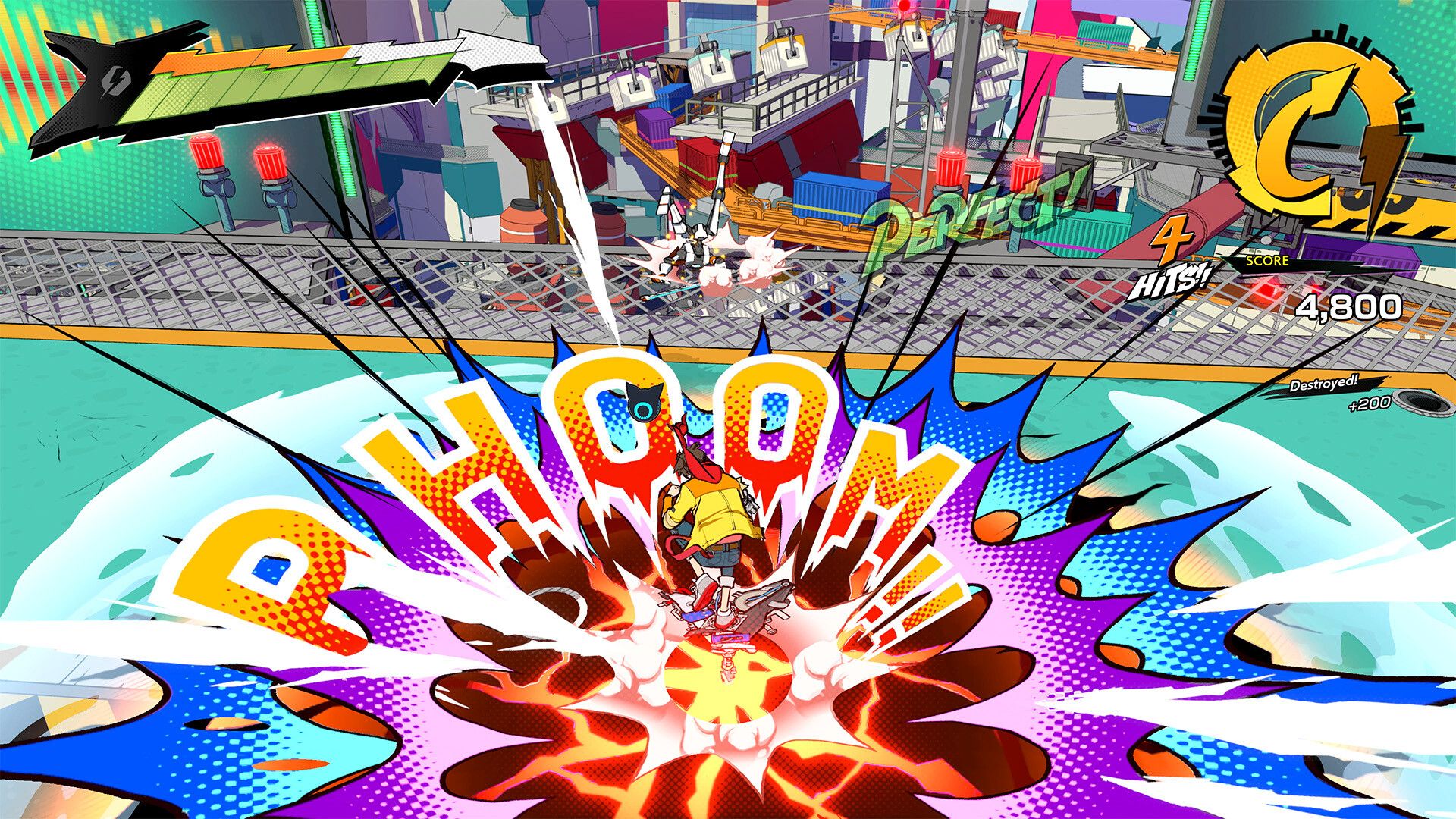Hi-Fi Rush Deserves Your Attention
The kickass sleeper hit of 2023 is here to stay

Raise your hand if Hi-Fi Rush was on your list of 2023’s most anticipated games. No one? Don't feel bad, you weren't alone. After all, how could it have been, when the rhythm-based action adventure was shadow-dropped out of nowhere by Bethesda with little to no marketing or prior exposure? And yet the game prospered, confidently standing toe-to-toe with Square Enix's heavy-hitter Forspoken, released during the same window, and outperforming the AAA action RPG when it comes to critical reception.
But why is that?
The long answer would be that Hi-Fi Rush managed to serve as a beacon of optimism in the ocean of cynicism found in modern gaming. One glance at the game, be it gameplay or screenshots, will paint a picture of a colorful and sunny game determined to provide players with an honest-to-goodness fun experience and nothing else.
The short answer? It all lies in the game’s philosophy of hitting stuff to the beat.
Playing to the Beat
As players wade through the game’s setting of the Vandelay Technologies megacomplex, the game provides players with a background music track of which musical beats are constantly emphasized in-game. Almost every single visual aspect of the game follows the rhythm of the game’s music; industrial pistons in the background bounce to the rhythm, jumping platforms fold to the drumbeats, and player character Chai crashes into walls to the beat in cutscenes. Everything here follows the rhythm, not least of all the game’s combat.

Combat in Hi-Fi Rush operates similarly to hack-and-slash games like Devil May Cry, complete with strings, aerial combat, and combo setups. It even has parry and dodge mechanics. It’s simple, but certainly not shallow. The main selling point here, however, is the way combat interacts with the beat of the music.
For starters, hits that time perfectly with musical beats deal more damage. Not only that but players are also encouraged to dodge and parry incoming blows along with the beat. Enemy attacks are not only well-telegraphed but also correspond with the soundtrack. The great usage of beat-based combat doesn’t end there, as the game has a bunch of fun combat interactions including ‘standoffs’ with certain strong enemies that require players to parry a sequence of attacks on beat with the game’s rhythm, or ‘beat hits’ that when timed right, will deal massive damage at the end of a combo string.
Despite the seemingly demanding combat mechanics, Hi-Fi Rush is quite forgiving regarding timing. The game does not punish players too hard for not attacking on-beat, and not all inputs need to be in exact timing. The game itself is fast-paced, but it never gets too overwhelming, with a (somewhat) reasonable number of enemies on-screen, so long as players familiarize themselves with the beat of the game.
Striking Colors and Characters
When players do get in tune with the game, Hi-Fi Rush rewards players with immensely satisfying player feedback, where every just-beat attack input is met with an in-game cheer and a small but noticeable visual cue. On the other hand, landing a massive beat-hit on an enemy is profoundly satisfying with flashy visual and audio cues.
After all, players can get ‘lost’ in the game’s eye-popping visuals and catchy art style. Every color seemed to pop out in Hi-Fi Rush; no worries about muted color palettes here. The same also translates to the game’s distinctive character designs, which are flashy but not overdone. There is not a single dull character in the game.
And it’s not like these striking visuals are just for show either. Every single character in the game was well-written, from protagonist Chai to his band of misfits to even the main enemy bosses. The game even sprinkled just enough character development to the main leads to keep them from becoming one-note. Each of Chai’s interactions with his friends is unique and engaging, as well as the imaginative boss encounters, which serves as a testament to the excellent performance of all members of the cast.
The simple-yet-effective plot takes players through often fresh and hilarious dialogue from a story that doesn’t take itself too seriously. And whatever little dramatic moments that exist in the game, instead of being dampened by the game’s constant comedies, they are instead enhanced by the game’s most powerful weapon: music. Of course, the Jojo references do not hurt either.
Incredible Post-Game Content
Once players are done with the game’s main story, Hi-Fi Rush dishes out yet another surprise: extensive endgame content that can be found hidden in most missions.
Yes, the content doesn’t just end with players striving to get a perfect S score in all enemy encounters, but with a series of rooms designed to test the players’ knowledge and proficiency of the game. Do that, and the game will reward players with—would you believe it—a secret ending. Not to mention, finishing the story unlocks character customization for Chai and the main leads.
A linear game this good suddenly decides to provide players with more content apart from higher-difficulty replays and menial challenges? This right here is a GODSEND.

Hi-Fi Rush Flies By
Overall, Hi-Fi Rush is a surprisingly impressive action-adventure game, a fact made more surprising considering Tango Gameworks’ previous resume of producing horror-focused experiences such as The Evil Within series, which has its easter eggs in Hi-Fi Rush, of course.
It is definitely an early GOTY contender and I am looking forward to what it has to offer in the future. The concept of rhythm-based hack-and-slash is undoubtedly still fresh and open for more exploration. More than a single weapon for Chai, more button combos, or even more playable characters with different fighting styles could be utilized.
Knowing the game is free with Xbox Game Pass and only half-price anywhere else, free of modern gaming trappings such as live service, early access, day one patches, and overinflated marketing, all I can say about Hi-Fi Rush is this: more of these games, please.
